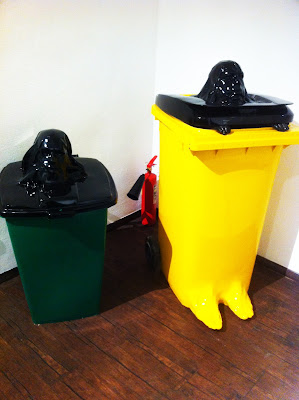I started making photographs shortly after graduating from college with a degree in English Literature. My original portfolio of photographs was very dark and disturbing. At that time, I was interested in Frederick Sommer and Joel Peter Witkin, and was creating proto-horror assemblages that sometimes included animal parts. I landed an internship with Nick Vedros, who is the biggest photographer in my hometown of Kansas City, and Nick encouraged me to make my work more palatable to survive as a commercial photographer. From Nick I moved onto Hallmark Cards, which is also based in my hometown.

The Horror genre is a vast sprawling landscape, populated by numerous sub-genres and hybridized genre mutants, like the Horror-Comedy, Sci-Fi Horror, and even the Horror Musical. Some would argue that it is impossible to devise a definition of Horror that encapsulates them all. What is the difference between a Horror film and a Thriller? Or a Horror film and a Suspense film?

 I was very inspired by him, when I was creating my project "Who am I, Where am I?", cause my project is about child's fears too. But the difference is that I don't want to show pure naked fear with all that horror stuff, I want it to be more natural, but still a bit scary for child.
I was very inspired by him, when I was creating my project "Who am I, Where am I?", cause my project is about child's fears too. But the difference is that I don't want to show pure naked fear with all that horror stuff, I want it to be more natural, but still a bit scary for child.
Situations, I depict came up from my own memories and fears, as well as the fears of my children. There are sometimes allusions to specific horror films or fairy tales. I am especially attracted to any fears that might be considered universal - like the fear of a monster or boogeyman lurking under your bed.



Does a movie require a monster, or a supernatural element to qualify as Horror? Dictionary.com defines Horror as “an overwhelming and painful feeling caused by something frightfully shocking, terrifying, or revolting.” The Horror genre seeks to elicit this negative emotional reaction from viewers. Stock elements, such as ghosts, vampires, serial killers, and so forth, may populate the Horror genre, but they do not define it. Movies about the supernatural, and movies with monsters, are not necessarily always horrific. I believe that the Horror genre is best defined by it’s intent to terrorize the audience. Although many sequences in non-Horror films are frightening, they do so to advance narrative agendas that have something other than fear at their cores. Non-Horror films may frighten the audience to tell their stories, but Horror films tell stories to frighten the audience. In the former, fear is a side effect; in the latter, it is the object of the exercise.

The Horror genre is a vast sprawling landscape, populated by numerous sub-genres and hybridized genre mutants, like the Horror-Comedy, Sci-Fi Horror, and even the Horror Musical. Some would argue that it is impossible to devise a definition of Horror that encapsulates them all. What is the difference between a Horror film and a Thriller? Or a Horror film and a Suspense film?

 I was very inspired by him, when I was creating my project "Who am I, Where am I?", cause my project is about child's fears too. But the difference is that I don't want to show pure naked fear with all that horror stuff, I want it to be more natural, but still a bit scary for child.
I was very inspired by him, when I was creating my project "Who am I, Where am I?", cause my project is about child's fears too. But the difference is that I don't want to show pure naked fear with all that horror stuff, I want it to be more natural, but still a bit scary for child.Situations, I depict came up from my own memories and fears, as well as the fears of my children. There are sometimes allusions to specific horror films or fairy tales. I am especially attracted to any fears that might be considered universal - like the fear of a monster or boogeyman lurking under your bed.



Does a movie require a monster, or a supernatural element to qualify as Horror? Dictionary.com defines Horror as “an overwhelming and painful feeling caused by something frightfully shocking, terrifying, or revolting.” The Horror genre seeks to elicit this negative emotional reaction from viewers. Stock elements, such as ghosts, vampires, serial killers, and so forth, may populate the Horror genre, but they do not define it. Movies about the supernatural, and movies with monsters, are not necessarily always horrific. I believe that the Horror genre is best defined by it’s intent to terrorize the audience. Although many sequences in non-Horror films are frightening, they do so to advance narrative agendas that have something other than fear at their cores. Non-Horror films may frighten the audience to tell their stories, but Horror films tell stories to frighten the audience. In the former, fear is a side effect; in the latter, it is the object of the exercise.












































